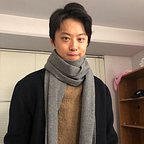On May 21, I attended my first hackathon organized by JunctionX. JunctionX Seoul 2021 was a global virtual hackathon event sponsored by four different companies: Microsoft, AWS, AUTOCRYPT, and SIA (SI Analytics). Each company presented a mission and each team had to make a submission for one of the missions.
From team building, ideation to actual product creation, this hackathon was one of the most intellectually stimulating and enlightening experience of my life. I would like to share challenges we faced, what I learned and what we made in this 48 hours.
Team Building:
I think team building was one of the most important part of hackathon. Fortunately team building went very smoothly for us. Since we already had two developers in our team, we focused on finding designers and product managers. Our final team consisted of three developers, two designers, and one product manager. Everyone had amazing past experiences and portfolio and I’m glad they immediately decided to become part of our team when I asked. Our team got close very quickly and everyone was able to contribute a lot to the end product. Everyone was super stressed at one point but were all encouraging each other to finish the race — this was one of the most memorable thing about this event.
Ideation:
Once team building was over, missions were announced. We chose Autocrypt’s track mission: “Plan a mobile app or web service that can improve the life of those living with mobility challenges so that every person can enjoy the right to a convenient, fair mobility environment.”
This is where we struggled the most. Ideation took way longer than we expected, and we were coming up with nothing for the first couple hours. One of the team member suggested using a tool called Miro for brainstorming.
With Miro we started to come up with multiple service ideas. The first one we thought of was a platform that dynamically updates transportation routes based on user’s desired locations. However, we threw away this idea because there were a lot of complicated logics that we needed to design (i.e. auto route update algorithm). We all agreed that we won’t be able to make this work within a day. This was actually a mistake — the main purpose of the mission wasn’t creating a perfect prototype but creating an innovative and convincing service. Many teams, including one of the winning teams, submitted a prototype that didn’t have the main logic implemented but only visually described.
In the end, we decided to build a Subscription based Mobility as a Service Platform that benefits elderly population. Elderly population is increasing rapidly and are being left out in this generation of mobility revolution (Services like Uber, Lyft, and even autonomous driving). So we first researched why they were being left out — older people have tendencies to avoid change which prevent them from accessing newer technologies and use complicated transportation systems. We also discovered that old people typically go somewhere regularly (i.e. visiting families, hospitals, etc). Hence, we thought a subscription based platform would satisfy elderly population’s needs as it minimizes in-app interaction, allows other family members to subscribe for them, and reduces cost.
Product:
Designers worked on UI/UX flow on Figma, and also simultaneously prepared presentation slide templates.
We decided to have two developers on the client side and one on backend. We chose NodeJS for server, MongoDB for our database, and NextJS for frontend.
Backend developer designed APIs, DB schemas, and set up CI/CD flow for deployment.
I worked on client side and made all pages that dealt with Google Map API. The most difficult part was syncing address and pin locations as it required a lot of state/context manipulation. When I made it work, it was extremely satisfying.
Another front end developer worked on all the other pages, including payment using Stripe, driver/user list, and driver/user schedules.
Finally, during the last couple hours, I prepared a script and recorded our presentation. The designers somehow edited everything and put together a 5 min long presentation video in less than 30 minutes. I was so surprised by how fast everything was being done an hour before submission.
Here is a link to our end result.
https://www.youtube.com/watchv=EPPHwDcx6ug&ab_channel=allnighter
Conclusion
Unfortunately, we were not selected as one of the winning teams. However, I am so glad that I had this experience. I learned so much from hard-working team members, and I also realized that a lot can be done in a short time span if multiple individuals work together in same direction.
I am satisfied by every moment of this hackathon, and it motivates me to attend more events like this. Next time, I would like to be more ambitious during ideation stage, and not limit our ideas by programmers’ capability.
